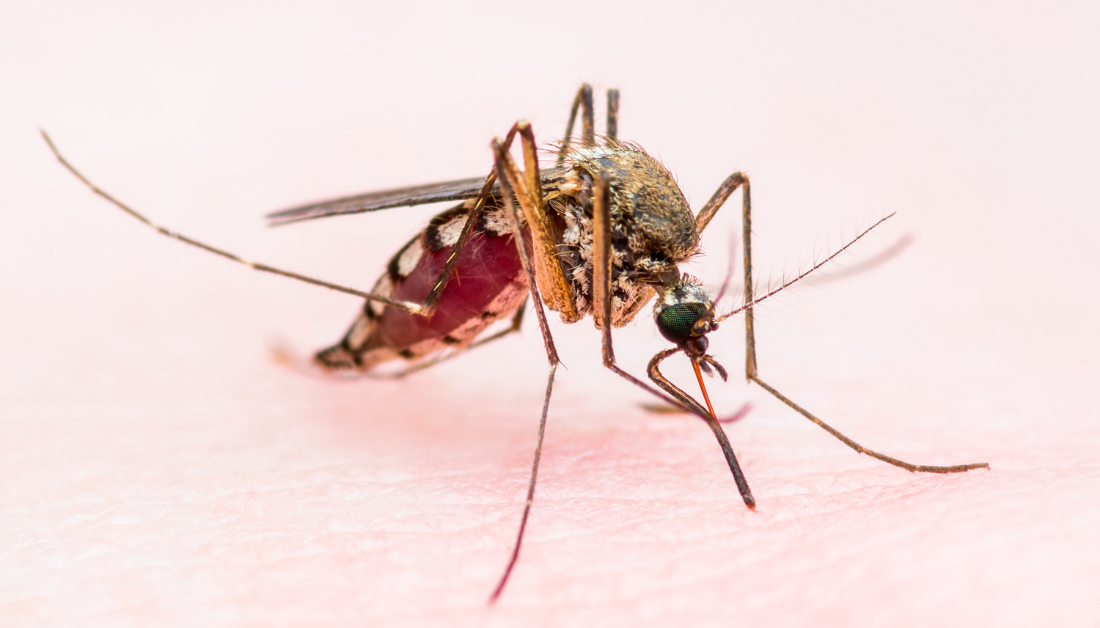

The identification of a malaria protein that aids parasite growth inside red blood cells and plays an important regulatory function in the parasite’s immune evasion strategies could pave the path for novel vaccines or therapies to combat the fatal infection.
The protein, known as PfAP2-P, was previously discovered in a KAUST-led study that looked into malarial genes and proteins with rhythmic 24-hour expression patterns – an adaptation that allows the parasite to synchronize its activities with those of the host during the human blood stage of its developmental cycle.
PfAP2-P expression appears to peak around 16 hours after red blood cell invasion and then again around 24 hours later. These peaks correspond to the activation of genes associated with two critical biological processes. The first occurs when malaria parasites coat the red blood cells they infect with various combinations of sticky proteins in order to avoid immune detection, and the second occurs when groups of young parasites prepare to escape one red blood cell and infiltrate additional uninfected red blood cells.
This observation piqued the interest of Amit Kumar Subudhi, a research scientist at Arnab Pain’s lab. He intended to discover the role of PfAP2-P with Pain and partners from other KAUST labs.
They demonstrated that PfAP2-P is a critical regulator of numerous key biological processes in the parasites using a series of molecular tests. The protein functions as a regulator of genes involved in immune evasion as well as a suppressor of genes involved in the parasite’s transition to its sexual stage of development.
The researchers also discovered a number of unique proteins that are either directly or indirectly controlled by PfAP2-P, some of which could be targets for future therapeutic development. They also identified that PfAP2-P functions as an activator of the proteins essential for the parasite to depart infected red blood cells and infiltrate new ones.
The most interesting finding came from research on mutant malaria parasites that lacked a functional form of PfAP2-P. These parasites were unable to govern the coordinated expression of highly changeable sticky proteins on the surface of red blood cells, which were involved in evading immune detection.
Instead of playing “hide and seek” with the host immune recognition system, red cells infected with these PfAP2-P-defective parasites displayed the entire array of sticky surface proteins. As a result, the PfAP2-P-deficient parasites were easily recognized by malaria-destroying antibodies, which could help teach the body to fight typically occurring malaria infections.
The KAUST researchers are currently investigating the possibility of using these mutant parasites as vaccine-like “immune triggers” to prevent natural malaria infections in humans.
For more information: DNA-binding protein PfAP2-P regulates parasite pathogenesis during malaria parasite blood stages. Nature Microbiology. doi.org/10.1038/s41564-023-01497-6.
more recommended stories
 Can Ketogenic Diets Help PCOS? Meta-Analysis Insights
Can Ketogenic Diets Help PCOS? Meta-Analysis InsightsKey Takeaways (Quick Summary) A Clinical.
 Silica Nanomatrix Boosts Dendritic Cell Cancer Therapy
Silica Nanomatrix Boosts Dendritic Cell Cancer TherapyKey Points Summary Researchers developed a.
 Vagus Nerve and Cardiac Aging: New Heart Study
Vagus Nerve and Cardiac Aging: New Heart StudyKey Takeaways for Healthcare Professionals Preserving.
 Cognitive Distraction From Conversation While Driving
Cognitive Distraction From Conversation While DrivingKey Takeaways (Quick Summary) Talking, not.
 Fat-Regulating Enzyme Offers New Target for Obesity
Fat-Regulating Enzyme Offers New Target for ObesityKey Highlights (Quick Summary) Researchers identified.
 Spatial Computing Explains How Brain Organizes Cognition
Spatial Computing Explains How Brain Organizes CognitionKey Takeaways (Quick Summary) MIT researchers.
 Gestational Diabetes Risk Identified by Blood Metabolites
Gestational Diabetes Risk Identified by Blood MetabolitesKey Takeaways (Quick Summary for Clinicians).
 Phage Therapy Study Reveals RNA-Based Infection Control
Phage Therapy Study Reveals RNA-Based Infection ControlKey Takeaways (Quick Summary) Researchers uncovered.
 Pelvic Floor Disorders: Treatable Yet Often Ignored
Pelvic Floor Disorders: Treatable Yet Often IgnoredKey Takeaways (Quick Summary) Pelvic floor.
 Urine-Based microRNA Aging Clock Predicts Biological Age
Urine-Based microRNA Aging Clock Predicts Biological AgeKey Takeaways (Quick Summary) Researchers developed.

Leave a Comment